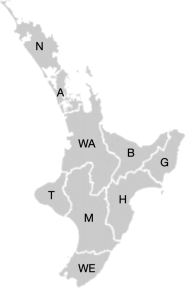COMPSCI 367 Assignment 2 2023
Hello, dear friend, you can consult us at any time if you have any questions, add WeChat: daixieit
COMPSCI 367
Assignment 2
due 8 October 2023
Due: by 11:59pm on the due date. Late assignments will not be marked.
Total mark: 15.
Worth: This assignment counts towards 15% of your inal mark.
Please answer ALL questions. submit the answer to Question 1 as a pdf ile Q1. pdf. submit the answers to Question 2 and Question 3 as prolog code, i.e., . pl iles, as mapcolouring. pl and surround. pl, respectively.
1. [5 marks] suppose you are building a decision support system that helps people with invest- ment options. The system assumes that the user has some money to invest and can help select among the following possibilities:
. an income fund
. a growth fund
. a conservative fund
You will build a simple knowledge base, consisting of a set of rules written below (in a slightly abbreviated form). Each rule is written as an implication, expressed in terms of an if part (the premise) and a then part (the conclusion). The conclusion conservative, income, growth are the three fund possibilities.
For example, rule (3) delivers the following message: “If you are retired and you have basic insurance coverage, then the category of fund to select is the income fund” .
(1) if have health insuTance and have life insuTance
then basic insuTance coveTage
(2) if investment foT TetiTement and basic insuTance coveTage
then conservative
(3) if TetiTed and basic insuTance coveTage
then income
(4) if investment foT childTen education and basic insuTance coveTage
then growth
(5) if investment foT home owneTship and basic insuTance coveTage
then growth
(6) if age三65
then not TetiTed
(7) if age>65
then TetiTed
(8) if not TetiTed and no pension
then investment foT TetiTement
(9) if have childTen and childTen,s education not funded
then investment foT childTen education
(10) if no home owneTship and want home
then investment foT home owneTship
Answer the following questions and write down the solutions in Q1. pdf ile. clearly indicate the solutions to (a) and (b):
(a) [2 marks] Design a deinite clause knowledge base using the information above. clearly list the atomic propositions (with their intended meaning) and the clauses in the KB. An
example that contains a few atomic propositions and a rule is given below:
E①ample. Atomic propositions:
. BasInsure: The user has basic insurance cover
. HeaInsure: The user has health insurance
. LifInsure: The user has life insurance
clause (1): BasInsure — HeaInsure V LifInsure
(b) [3 marks] suppose a user has the following information:
(11) is 42 years old
(12) has health insurance, and (13) life insurance
(14) not covered by a pension plan
(15) has one child, age 12, who (16) does not have funding for education (17) does not currently own a house and (18) would like to own one.
Apply sLD resolution on the three queries
i. ask conservative
ii. ask income
iii. ask growth
For each case, provide aproof if the answer is true, and answer why if the answer is false.
2. [4 marks] solve the map colouring problem for North Island using prolog. Up to three colours, red, green, blue, are allowed to use. Two adjacent regions cannot be marked with the same colour.
You may use the following knowledge base:
. different(red, green) .
. different(red, blue) .
. different(green, blue) .
. different(green, red) .
. different(blue, red) .
. different(blue, green) .
Implement a prolog predicate mapcolouring(N,A,WA,B,G,T,M,H,WE)where a variable should be the corresponding word as indicated in the following map. submit your answer as mapcolouring. pl ile.

3. [6 marks] Given is a 4 x 4 board with each grid marked with either “+” or “ —” . The goal is to ind all — grids that are SUTToUnded by +. A — grid at the edge cannot be surrounded.
More formally, each grid can have up to 4 neighbour grids, i.e., top, bottom, left and right. If one grid or a group of “ —” grids forms a “connected” area and their neighbours are all “+” grids, then all “ —” grids in this group are SUTToUnded. otherwise, if any a — grid in that group has a — neighbour that is at the edge, then all neg grids in this group are non-surrounded. For example, in igure (a), the — grids highlighted in red are surrounded; in igure (b), no — grid is surrounded.
use the constants g11, g12, . . . , g44 to denote the coordinates of grids. use the rules neg(G) and pos(G) to denote a grid marked with — and +, respectively, where the variable G e {g11, g12, . . . , g44}.
You are requested to: Build a knowledge base and implement a prolog predicate is surrounded![]() (G) such that is surrounded
(G) such that is surrounded![]() (G) is true if G is a — grid and is surround- ed by + grids, and false otherwise. You are allowed to deine any additional and auxiliary rules.
(G) is true if G is a — grid and is surround- ed by + grids, and false otherwise. You are allowed to deine any additional and auxiliary rules.

Evaluation. your programme may be tested using diferent conigurations of the board. For example, the coniguration code for the igure (a) is:
neg(g21).
neg(g23).
neg(g32).
neg(g33).
pos(g11).
pos(g12).
pos(g13).
pos(g14).
pos(g22).
pos(g24).
pos(g31).
pos(g34).
pos(g41).
pos(g42).
pos(g43).
pos(g44).
The coniguration code will be added at the top of the knowledge base when testing.
Submit your answer as surround. pl ile.
2023-09-22